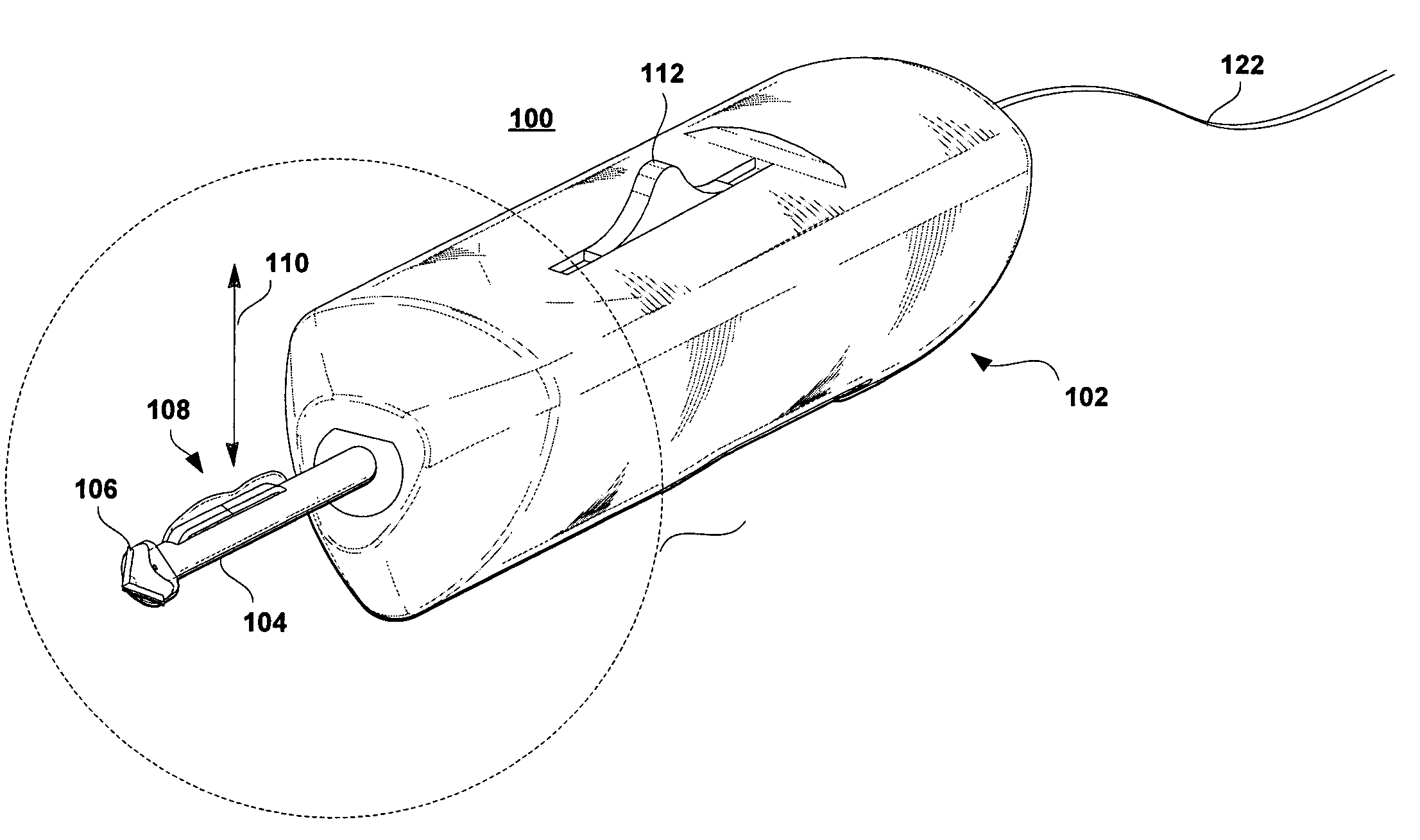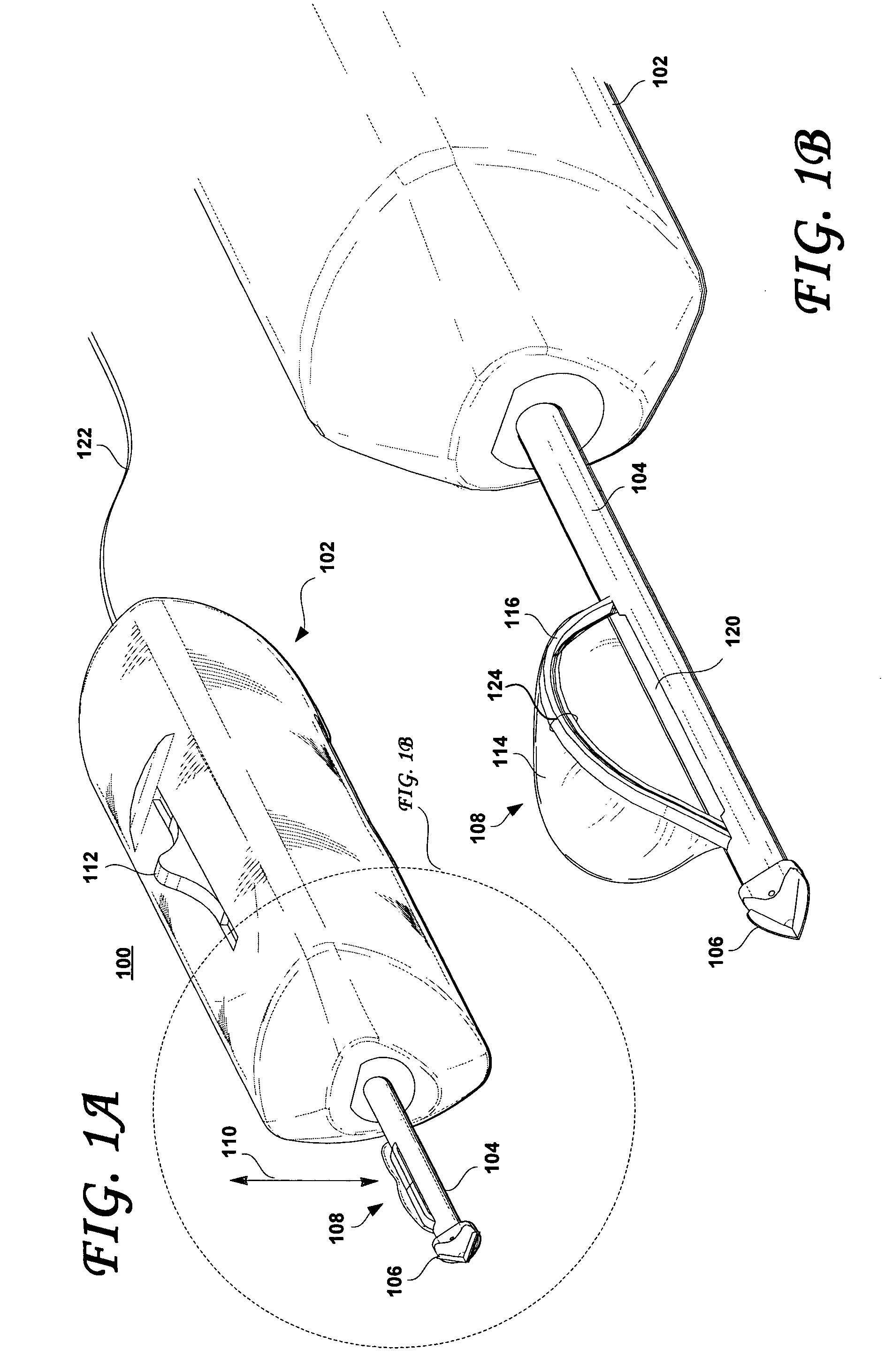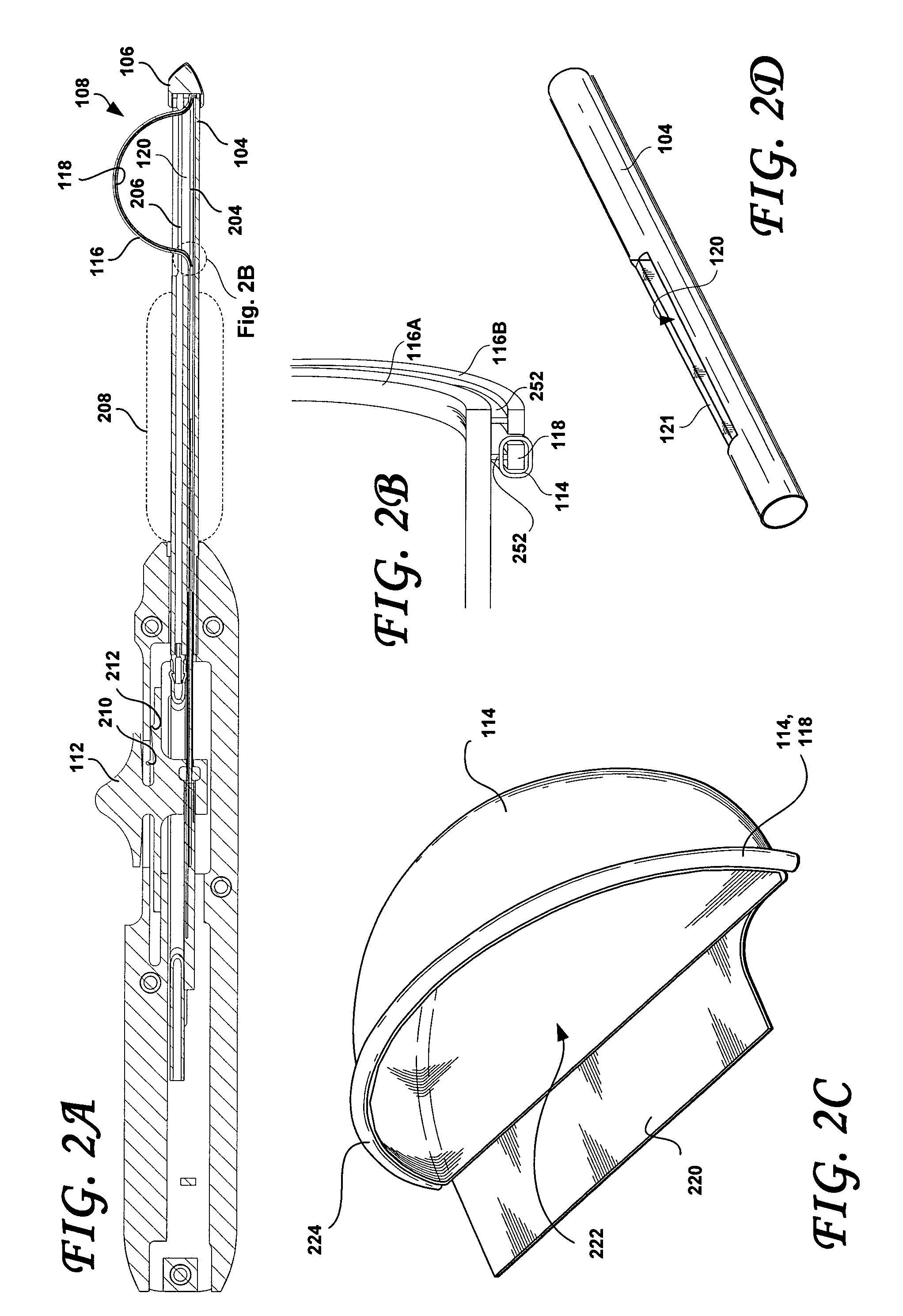Methods and devices for cutting and collecting soft tissue
a soft tissue and excision technology, applied in medical science, surgery, vaccination/ovulation diagnostics, etc., can solve the problems of mammography generally involving a time-consuming, multi-step process, and breast cancer is a major threat and concern for women
- Summary
- Abstract
- Description
- Claims
- Application Information
AI Technical Summary
Problems solved by technology
Method used
Image
Examples
Embodiment Construction
[0069] FIG. 1A is a perspective view of an excisional device according to an embodiment of the present invention. As shown, the excisional device 100 includes a proximal section 102 that may be configured to fit the physician's hand. Extending from the proximal section 102 is a shaft 104 that may be terminated by a distal tip 106. However, an introducer may be used for the initial incision, whereupon the tip 106 may be omitted from the device 100. The distal tip 106 is configured so as to easily penetrate a mass of tissue, and may feature curvilinear cutting surfaces (best seen in FIG. 1B). The distal tip 106 may be configured to be energized by a radio frequency (RF) energy source, supplied via the electrical cord 122. However, the distal tip 106 need not be energized, as the sharpness of the cutting surfaces of the distal tip 106 is generally sufficient to easily penetrate the tissue to the target excision site. The distal tip 106 may be configured to be retractable and extendable...
PUM
| Property | Measurement | Unit |
|---|---|---|
| diameter | aaaaa | aaaaa |
| length | aaaaa | aaaaa |
| thickness | aaaaa | aaaaa |
Abstract
Description
Claims
Application Information
 Login to View More
Login to View More - R&D
- Intellectual Property
- Life Sciences
- Materials
- Tech Scout
- Unparalleled Data Quality
- Higher Quality Content
- 60% Fewer Hallucinations
Browse by: Latest US Patents, China's latest patents, Technical Efficacy Thesaurus, Application Domain, Technology Topic, Popular Technical Reports.
© 2025 PatSnap. All rights reserved.Legal|Privacy policy|Modern Slavery Act Transparency Statement|Sitemap|About US| Contact US: help@patsnap.com



